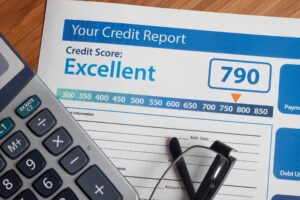**Title: Understanding Bridge Loans: How They Work and When to Use Them**
**What Is a Bridge Loan and How Does It Work?**
A bridge loan is a short-term financing option used in real estate transactions to provide cash flow during a transitional period, such as moving from one home to another. Homeowners can use this type of loan to finance a new home or pay off debt while waiting for their old home to sell. However, like any form of financing, bridge loans come with certain benefits and drawbacks.
While O1ne Mortgage Inc. doesnt currently offer bridge loans, were here to help you understand what they are and how they work.
**What Is a Bridge Loan?**
A bridge loan serves as a source of funding until you secure permanent financing or pay off debt. Also known as swing loans, bridge loans are typically short-term, lasting an average of 6 months to 1 year. They can be used to finance the purchase of a new home before selling your existing house.
Most home sellers prefer to wait until their house is under contract before placing an offer on a new house. This way, they can use money from the sale of their current property to help finance a new one. If youre unable to sell your home, bridge financing can provide you with the necessary funds to move forward with buying a new home.
**Characteristics of Bridge Loans**
If youre considering taking out a bridge loan, its important to understand both the general features of this loan type and the specifics that will depend on the bridge loan you choose.
– **Purpose:** Some bridge loans are designed to pay off your first mortgage at the time the bridge loan closes. Others add new debt onto the overall amount owed.
– **Duration:** Bridge loans typically run for a 6-month or yearlong term.
– **Repayment Terms:** Some lenders may require you to make monthly payments when you borrow with a bridge loan. Others may require a mix of upfront and/or end-term or lump-sum payment charges.
– **Interest Rates:** Interest rates for bridge loans tend to be about 2% above the prime rate and are generally higher than rates on conventional loans.
– **Collateral:** The borrowers current home is typically used as a form of collateral when taking out a bridge loan.
**How Does a Bridge Loan Work?**
A bridge loan isnt designed to replace long-term financing in the form of a traditional home loan. Its meant to be repaid within roughly 1 3 years. For this reason, a bridge loan is considered a type of non-mortgage or specialty financing rather than a traditional mortgage.
Its important to note that a bridge loans terms, conditions, and fees can vary greatly from one transaction to another and one lender to another. Costs and payment structures can also vary considerably between lenders.
**Bridge Loan Use Options**
In general, two main options are available for those seeking a bridge loan. You can use it as a second mortgage, or you can use it to pay off your current mortgage and pay towards the down payment on your new home.
– **Using it as a second mortgage:** Some borrowers use the bridge loan as a second mortgage to put toward the down payment on their new home until they can sell their current home.
– **Using it to pay off an old mortgage and pay towards down payment:** Other borrowers take out one large loan to pay off the mortgage on their old home. They then put the remaining money borrowed toward the down payment on their new home.
**Examples of When to Use a Bridge Loan**
Here are some additional examples of situations where a homeowner might seek out a residential bridge loan:
– You cant afford a down payment without first selling your current house.
– You need to quickly secure a new home due to a career transition.
– The closing date for your new home purchase is scheduled after the closing date for the sale of your home.
– You prefer to secure a new property before listing your current one.
– Sellers in your desired area arent comfortable with contingent purchase offers.
**Bridge Loan Mortgage Requirements**
Applying for a bridge loan works similarly to applying for a conventional mortgage. Your loan officer will look at your credit score, credit history, and debt-to-income ratio (DTI) when considering your application. Some lenders of bridge loans require a credit score of 740 or higher and a DTI below 50%, but these requirements vary by lender.
The majority of lenders will allow loan applicants to borrow up to 80% of their loan-to-value ratio (LTV). In other words, youll typically need at least 20% equity in your current home to qualify. You may also need to meet additional financial qualifications, depending on the lender.
**What to Consider Before Getting a Bridge Loan**
Whenever you are considering any form of financing, its important to do your research and become fully aware of the details of your loan and the expectations of your lender.
Two components of a bridge loan youll want to consider include the upfront expenses such as closing costs and what protection will be available to you in the event that your home sale falls through.
**Upfront Expenses**
As with traditional mortgages, bridge loans incur closing costs and origination fees. These can skew up to a few thousand dollars in expenses. You may also be required to pay for an appraisal.
**Lack of Protection for Buyers**
Be advised: Protections for buyers are often limited if the sale of their current home falls through. Its important to read the terms and conditions associated with any bridge loan offer. Because bridge loans are secured with your existing property, a lender can foreclose on that property if payments arent met.
In light of this, carefully consider how long you can afford to go without financial relief if a sale stalls. Likewise, note how you can avoid overextending yourself on any amounts borrowed. Its beneficial to do extensive research into the current real estate market and how long homes take to sell in your area.
**Pros and Cons of Bridge Loans**
As with all forms of lending and financing, bridge loans come with advantages and disadvantages. Youll want to consider the upsides and downsides to this form of borrowing.
**Pros**
– A bridge loan offers you the opportunity to buy a new house before youve sold your current home.
– You can make an offer on a new home without including a sale contingency.
– It provides additional funds in the event of a sudden or time-sensitive transition.
– It presents a helpful short-term solution for financing your way through periods of uncertainty.
– You may have no monthly payments for the first few months.
– Theres potential for interest-only payments, or deferred payments, until you sell.
**Cons**
– Bridge loans come with higher interest rates and a higher APR.
– Most lenders require a homeowner to have at least 20% home equity built up.
– Many financial institutions will only extend a bridge loan if you also use them to obtain your new mortgage.
– You may own two houses for a time and managing two mortgages at once can be stressful.
– Trouble selling your property can lead to future issues, or in a worst-case scenario foreclosure.
**Bridge Loan Alternatives**
Of course, its not always necessary to seek out a bridge loan if you need timely capital. After all, many other alternative forms of real estate financing can help you make ends meet.
**Home Equity Loans**
Home equity loans are a popular alternative to bridge loans. Under this form of financing, which is secured using your current home as collateral, you can borrow against your homes equity.
Home equity loans are typically long-term (typically 10 to 20 years) and offer comparable interest rates to bridge loans.
A home equity loan is often more affordable than a bridge loan, but this option still requires you to carry two mortgages if you buy a new home and dont sell quickly. You might consider this option if you’re planning on keeping the residence you’re leaving for an extended period.
**Home Equity Line of Credit (HELOC)**
A home equity line of credit (HELOC) takes the form of a second mortgage. Compared to a bridge loan, a HELOC offers a better interest rate, lower closing costs, and added time to repay borrowed sums.
You can use any amount borrowed with a HELOC to make home improvements and other upgrades. Note that some HELOCs may come with prepayment penalties.
**80-10-10 Loan**
An 80-10-10 loan is a financing option that requires less than a 20% down payment and allows you to avoid private mortgage insurance (PMI).
Under the terms of an 80-10-10 loan, you pay 10% down then obtain two mortgages: one for 80% of the new homes asking price, and a second for the remaining 10%. After selling your current home, you can use any funds left over after paying off any outstanding balances to pay off the 10% second mortgage.
**Personal Loan**
Finally, if you have a strong credit history, solid employment, a good payment history, and a low DTI, you might consider a personal loan. This kind of loan can be unsecured or secured with a personal asset you offer up to the lender as collateral if you fail to make on-time payments. A personal loans terms and conditions will vary by lender.
**The Bottom Line**
A bridge loan can come in handy if you need a new home before an old one has sold. It can help you out of a tight spot or help you scoop up a new home in a hot market. A bridge loan can be costly, however.
With a bridge loan, youll certainly have more cash in hand to spend on real estate. At the same time, though, youll add to your overall debt load. Plus, you may wind up paying off multiple loans simultaneously if your current home doesnt promptly sell. The best strategy, if possible, is to wait to sell your old house before moving forward to acquire a new property.
If youre ready to explore any bridge loan alternatives, start an application for a home loan with O1ne Mortgage Inc. to see what you qualify for. Visit [O1ne Mortgage Inc.](https://o1nemortgage.com) or call us at 888-372-8820 to speak with a mortgage expert today.
**Keywords:** bridge loan, real estate financing, short-term loan, home equity loan, HELOC, 80-10-10 loan, personal loan, mortgage, O1ne Mortgage Inc.







